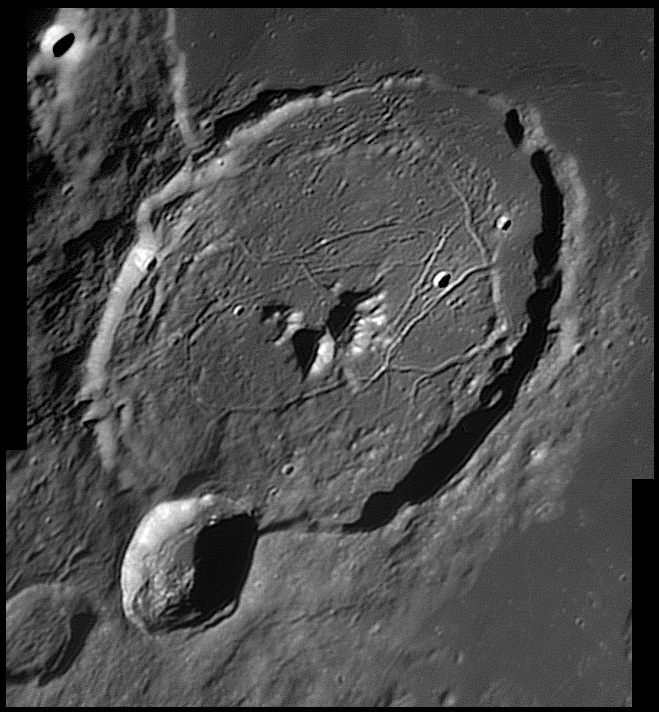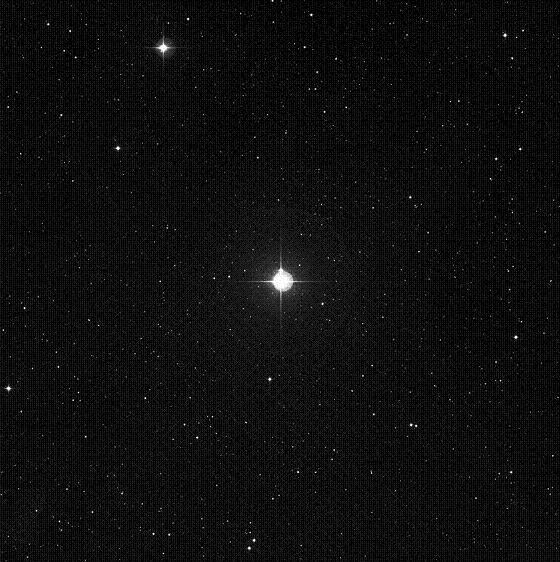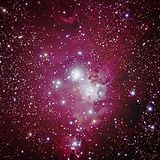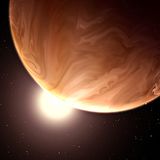
Look for Gassendi, the Moon's "Sea of Moisture," the westernmost star in Orion's belt, Mintaka, and the Orion Nebula on the weekend of January 10-12, 2014.
Friday, January 10 - Robert W. Wilson was born this day in 1936. Wilson is the co-discoverer, along with Arno Penzias, of the cosmic microwave background, and in 1978 he won the Physics Nobel Prize. While we're "listening in," on this day in 1946, the US Army's Signal Corps became the first to successfully bounce radar waves off the Moon. Although this might sound like a minor achievement, let's look just a bit further into what it really meant!
Known as "Project Diana," scientists were hard at work to find a way to pierce the Earth's ionosphere with radio waves - a feat believed at that time to be impossible. Headed by Lt. Col. John DeWitt, and working with only a handful of full-time researchers, a modified SCR-271 bedspring radar antenna was set up in the northeast corner of Camp Evans. The power was cranked up and it was aimed at the rising Moon. A series of radar signals were broadcast, and in each case, the echo was picked up in exactly 2.5 seconds - the time it takes light to travel to the Moon and back. The significance of Project Diana cannot be overestimated. The discovery that the ionosphere could be pierced, and that communication was possible opened the way to space exploration. Although it would be another decade before the first satellites were launched into space, they were later followed by manned rockets. Project Diana paved the way for all those achievements.
Tonight let's spend some of our observing evening with the beautiful Moon as we begin with the ancient and graceful landmark crater Gassendi standing at the north edge of Mare Humorum.
The mare itself is around the size of the state of Arkansas and is one of the oldest of the circular maria on the visible surface. As you view the bright ring of Gassendi, look for evidence of the massive impact which may have formed Humorum. It is believed the original crater may have been in excess of 462 kilometers in diameter, indenting the lunar surface almost twice over. Over time, similar smaller strikes formed the many craters around its edges and lava flow gradually gave the area the ridge and rille-overed floor we see tonight. Its name is the "Sea of Moisture," but look for its frozen waves in the long dry landscape.
Saturday, January 11 - Tonight in 1787, Sir William Herschel discovered two of Uranus' multiple moons - Oberon and Titania. If you'd like to see Uranus for yourself, it can be found just east of the circlet of Pisces (RA 0h 32m 52s - Dec 2°47'57") not long after skydark. It can be captured with mid-sized binoculars, but even a small telescope will reveal its slightly greenish orb!
As the Moon nears Full, it becomes more and more difficult to study, but there are still some features that we can take a look at. Before we go to our binoculars or telescopes, just stop and take a look. Do you see the "Cow Jumping over the Moon"? It is strictly a visual phenomenon-a combination of dark maria which looks like the back, forelegs and hind legs of the shadow of that mythical animal.
Tonight return again to Orion's belt as we have a closer look at its westernmost star - Mintaka. Located around 1500 light-years away, Delta Orionis usually holds a magnitude of 2.20, but orbiting it in a clockwise orbit of 5.7325 days is a nearly equal star around 8 million kilometers away. Mintaka is a prime example of an eclipsing binary star, and although visually you won't really notice a .2 magnitude drop in light, let's take a closer look with binoculars. As one of the few easy binocular double challenges, Mintaka will easily reveal its 6.7 magnitude companion star to its north. For over 100 years, the eclipsing physical AB pair has been closely watched and no movement between the half light-year apart physical pair has been detected. For those with larger telescopes - power up - and see if you can discover the 13th magnitude C star southwest of the primary.
No matter how you look at Mintaka, this fascinating star has been a part of history. It was the very first to display stationary spectral lines which proved the existence of interstellar matter!
Sunday, January 12 - Today in 1830 celebrates the founding of what, in 1831, would become the Royal Astronomical Society. The RAS was conceived by John Herschel, Charles Babbage, James South, and several others. The RAS has published its Monthly Notices continuously since 1831. Believed to have been born today in 1907 was Sergei Pavlovich Korolev. While few people recognize Korolev's name, he was a Soviet rocket engineer whose contributions to the science made him as important to the Russian space program as Robert Goddard was to that of the United States. His developments led to Sputnik, Vostok, Voskhod, and eventually the Soyuz programs.
Tonight the Moon will look nearly full and it is a good time to spot yet another lunar asterism, "The Rabbit in the Moon." Since the dawn of mankind, we have been gazing at the Moon and seeing fanciful shapes in large lunar features. The "Rabbit" is a compilation of all the dark maria. The Oceanus Procellarum forms the "ear" while Mare Humorum makes the "nose." The "body" is Mare Imbrium and the "front legs" appear to be Mare Nubium. Mare Serenitatis is the "backside" and the picture is complete where Mare Tranquillitatis and Mare Fecunditatis shape the "hind legs" with Crisium as the "tail." See the Moon with an imaginative mind and new eyes -- and find the "Rabbit." It's already out of the hat and in the heavens!

Orion - Credit: John Chumack
Despite bright skies, let's take a brief look towards the three stars that form Orion's belt. Starting with just our eyes, look around a thumb's length south to discover an asterism of stars referred to as the "sword." On a clear, dark night away from city lights you can spot a glowing cloud of dust and gas surrounding Theta that has long held a place in astronomy history. It was first noted only one year after Galileo first used his telescope, and the discovery is credited to Nicholas Peiresc in 1611. It wasn't until Christian Huygens sketched it in 1656 that it became well known for containing a "heart of stars."
Now, take out your binoculars and have a look. Stars are still being born in a dense cloud behind the nebula, and hundreds of them are less than a million years old. Compared to our own Sun's age of over four billion years, these would seem almost new! But think again at what you are looking at: the light you see tonight left this area around 1900 years ago.
So magnificent are the many details that can be seen in the Orion Nebula, that chapter upon chapter could be devoted to its riches. For now, feast your eyes upon this 30 light-year expanse of dust, neutral and ionized hydrogen, and doubly-ionized oxygen illuminated by the ultraviolet starlight of this stellar nursery. It is more than 20,000 times larger than our own solar system and its mass could form 10,000 stars like our own Sun!
Until next week. Wishing you clear skies!
Tammy is a professional astronomy author, President Emeritus of Warren Rupp Observatory and retired Astronomical League Executive Secretary. She's received a vast number of astronomy achievement and observing awards, including the Great Lakes Astronomy Achievement Award, RG Wright Service Award and the first woman astronomer to achieve Comet Hunter's Gold Status.

























